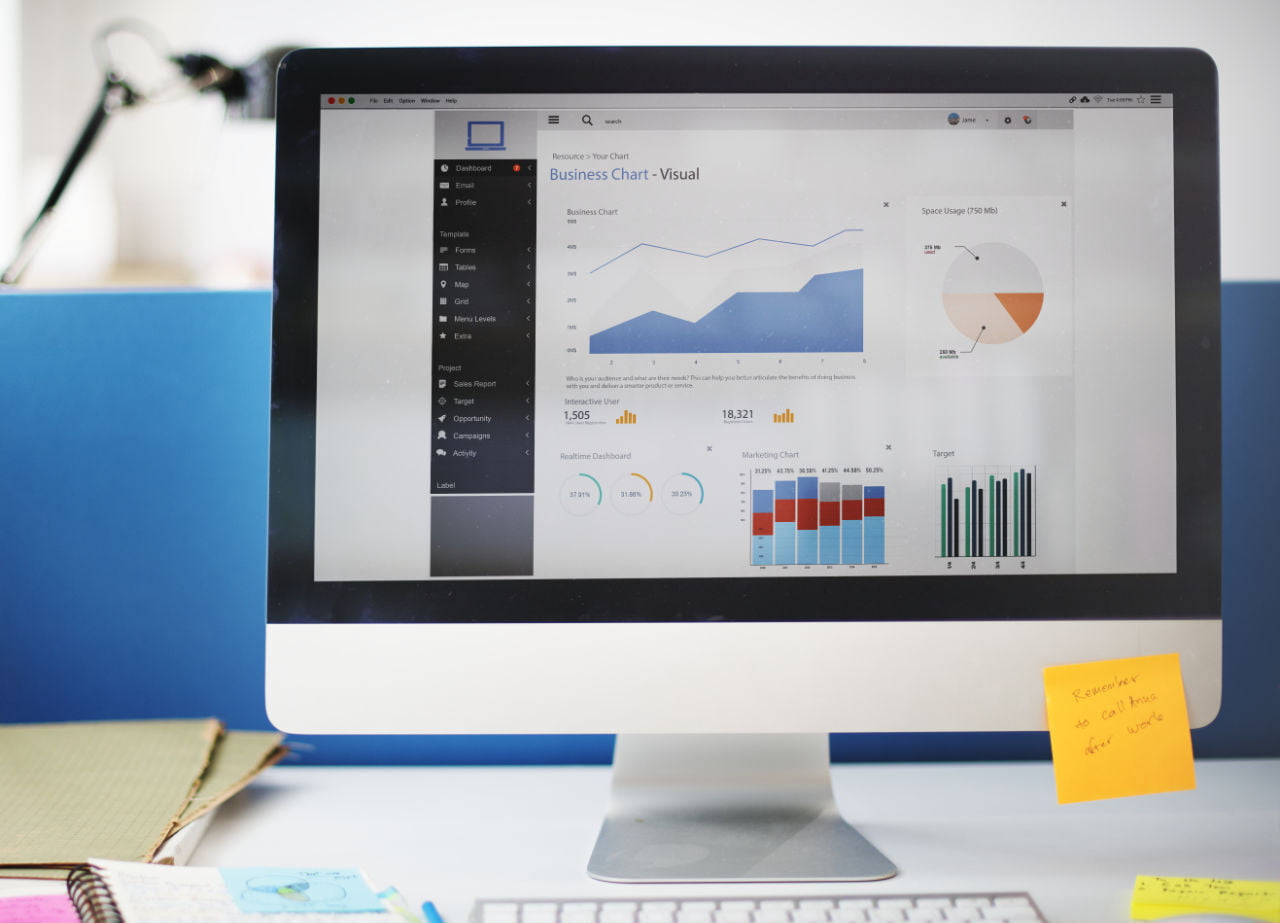
Marketing automation is the use of software to automate actions such as sending emails, updating lead statuses and lifecycle stages, sending internal notifications, creating sales deals, and more. It doesn't just improve efficiency but can also provide a more personalized experience for customers.
Today's buyers have unlimited choices. This makes it difficult to retain customers and gain the trust of new ones. The relationship your business has with a customer, and the customer experience you provide is often the final deciding factor for a purchase. This means every piece of communication you send becomes a critical touchpoint.
As a result, your business's most important communication often comes in the form of transactional emails like order confirmations and billing notifications. So when your business is sending out sales and marketing messages to create and nurture customer relationships, it is crucial to unify this communication with your transactional communication to create a cohesive experience across your brand. Having a marketing automation strategy is the first step to automating the marketing processes in your business.
Marketing Automation Strategies to Scale Your Business
Marketing Automation Strategies to Scale Your Business
Marketing automation is the perfect tool for creating this unified message since you can automate the majority of messaging to ensure it is consistent. When correctly implementing automation, marketers can use that data to significantly improve their results. The main appeal of automation is right in the name – it happens automatically. After a one-time investment, your automation will continue to produce results for years to come by saving you time and reducing costs as a result. Maintaining content to keep things current is all you need to do, and it's never been easier to maintain with today's tools. Let's take a look at the marketing automation strategies that can help you grow and scale your business.
Strategic Segmentation
Strategic Segmentation
Marketing segmentation is a tool for determining who your customers are and how to serve them best. With this information, you can develop more targeted marketing campaigns, thereby improving customer satisfaction. There are many benefits to segmenting your customer base. Here are some of them. Let's look at each of them in more detail. Here are some of the most important ones. These will help you understand your customers better and make your business more successful.
This approach allows you to reach out to a specific group of customers. This will reduce your customer churn and help you deliver the right type of products and services. By focusing your marketing efforts on the right segments, you can improve your customer retention, improve targeted communications, and increase your market share. There are many benefits to segmentation. Read on for more details. And don't forget to download this helpful guide.
As consumers' preferences and habits change, so do marketing trends. Using marketing segmentation can help you:
- improve your brand's image
- increase sale
- and create loyalty among customers.
It's a great way to stand out from the competition. By carefully segmenting your market, you can develop stronger messages and improve your audience's response. In addition to boosting your brand's image and gaining more business, market segmentation will help you improve your ROI.

Dynamic Content
Dynamic Content
Dynamic content creates a personalized experience based on data, user interests, preferences, and behavior at that particular time. The company's ultimate goal is to offer you content that you are most likely to engage with. This is also why today's marketers must tap into dynamic content. With customer-centric marketing taking the central spot in the marketing industry, most brands seek to create excellent customer experiences at each point of the buyer's journey.
For example, dynamic content can be used in email marketing, where you can customize content to groups of people through segmentation or customize fields such as name, job, behaviors, etc. Focusing on subscriber preferences is another way to incorporate dynamic content and show that you care about individual interests. Rather than simply focusing on past purchases, use past purchases to inform future purchases of products or services that you think subscribers will like.
Use the "based on this purchase" method to predict other items or services that your list members will like. Also, keep in mind that you can suggest future purchases based on other demographics that you have.
Drip Campaigns
Drip Campaigns
Email drip campaigns (aka drip campaigns, drip marketing campaigns, automated email marketing campaigns) are a series of pre-written marketing emails that work together to move consumers toward a final conversion point. They're referred to as "drip" campaigns because they provide ongoing value to email subscribers by slowly "dripping" helpful information, updates, products, and notifications, over time.
Email marketing drip campaigns are fully automated in which emails are sent based on specific timelines or user actions (or inactions). For example, the system sends an email as soon as someone subscribes to an email list and then every following Monday for the next ten weeks. Or, if a prospect has been visiting a product upgrade post-click landing page for a few weeks but hasn't actually upgraded yet, a drip can help explain the benefits of upgrading.
Simply put, drip campaigns are all about delivering subscribers the right information at the right time to push them further down your funnel to eventually convert. Drip marketing campaign flowcharts can be as simple or extensive as you want them to be, with any number of rounds and pathways.
Precise segmentation leads to more revenue.
Precise segmentation leads to more revenue.
Drip marketing can lure in prospects, educate leads, reward customers, and more — all within the same email campaign. By pinpointing, segmenting, and then reaching out to specific user groups, you can reach the right people and times.
A segmented email drip campaign can also build trust with an audience. Rather than blasting your entire email list with the same campaign, subscribers divide into different funnels and are approached differently — more appropriately. Since the emails you're sending are more targeted and relevant, they feel more personalized.

More engagement with less effort
More engagement with less effort
Part of the reason a drip campaign generates more revenue than other email campaigns is that it helps boost engagement. Drip emails offer a 119% increase in click rate, which is huge considering drip campaigns require less effort than many others.
First, by proactively sending relevant material to targeted prospects, you remove a lot of the legwork needed to get them interested. Since they're already interested, you're essentially shortening the sales cycle by moving leads more quickly through the funnel. A great drip email campaign also weeds out unresponsive site visitors, so it helps save time or energy trying to make contact.
Second, drip emails depend on automation, so they don't need your constant attention. Although you still have to monitor and test (more on this later), marketing team members don't need to devote much time to creating and sending emails. This is welcome news, especially since pairing marketing automation with an email marketing drip campaign can lead to 20% more sales opportunities.
Team Collaboration
Team Collaboration
Project management tools and tech stack integrations can help make team collaboration easier. Think about when teams need to work cross-functionally to accomplish a common goal. For example, a marketing team will have designers, copywriters, web developers, video editors, and other creative individuals all working to produce amazing content, campaigns, and other marketing materials.
Project management tools allow you to create projects align with sub-tasks and checklists and even assign them to different members of the team. At any time, anyone can see the progress of each project and what needs to be done for it to be completed. Members can even set and track goals and even time tracking to increase productivity.
Additionally, it's vital to have a tech stack that integrates with one another. For example, a sales and marketing team will need their CRM and marketing automation tools integrated to allow data to be shared across both teams.
Marketing automation captures the top and middle of funnel activity for prospects. This means they'll gather data about their demographics, psychographics, and even behavioral data like how they interact with your brand. All of these data should be shared with the CRM tool so that sales teams can better understand their prospects and personalize their selling approach to each potential buyer.

Lead Nurturing
Lead Nurturing
Lead nurturing is the process of establishing and building relationships with leads (or potential customers) throughout the buyer journey. A lead nurturing strategy can use several channels and marketing tactics, including email, social media, and advertising. Lead nurturing is designed to do two things: Convert leads and identify areas of improvement for your sales funnel. Both of these are essential since one gives you an actual customer, and the other helps you get more customers later. When you meet both of these objectives for nurturing leads, you unlock huge growth potential for your business, and you can reach your lead nurturing marketing goals.
Here's why lead nurturing is important for your business:
Find Segmentation Opportunities - Similarly, you can learn more about your leads via this email nurturing and segment your emails going forward on what you learn to have more effective communications going forward. MarketingSherpa found that segmented emails get 50% more clicks, so any opportunity you have to segment your leads, you should take.
Maintain or Increase Engagement - Automated lead nurturing is a great way to maintain engagement when a lead has already made a move to interact with you. And, if that lead has stopped visiting your site or reviewing your offerings, lead nurturing is a great way to remind them about your business.
Automate Nurturing Through the Sales Cycle - Market2Lead found that nurtured leads have a 23% shorter sales cycle. Lead nurturing is a way for the marketing team to help with the sales process and nurture more leads through the sales funnel.
Find Cross-Sell and Up-Sell Opportunities - In the case of past customers, lead nurturing offers a way to broaden that customer's awareness of what you offer. The same Market2Lead study found that nurtured leads have a 9% higher average deal size, showing that there is an opportunity not only to increase the number of sales but the size of sales using lead nurturing.
Chatbot
Chatbot
Marketing automation is the use of software to automate actions such as sending emails, updating lead statuses and lifecycle stages, sending internal notifications, creating sales deals, and more. It doesn't just improve efficiency but they may be able to support chatbot marketing which is a marketing technique that employs computer programs to automate interactions with prospects and customers, either on your website or in your app, for the purpose of generating sales.
Using chatbots in marketing strategies allows companies to qualify and engage with leads at all hours and at any capacity, regardless of whether or not your marketing and sales team are online. Just like how you can use marketing chatbots to answer support questions, you can use chatbots to start conversations with website visitors, qualified leads, and even upsell customers.
A personalized experience for customers. Today's buyers have unlimited choices. This makes it difficult to retain customers and gain the trust of new ones. The relationship your business has with a customer and the customer experience you provide is often the final deciding factor for a purchase. This means every piece of communication you send becomes a critical touchpoint.

As a result, your business's most important communication often comes in the form of transactional emails like order confirmations and billing notifications. So when your business is sending out sales and marketing messages to create and nurture customer relationships, it is crucial to unify this communication with your transactional communication to create a cohesive experience across your brand.
Marketing automation is the perfect tool for creating this unified message since you can automate the majority of messaging to ensure it is consistent. When implementing automation, 76% of marketers see positive ROI within a year. The main appeal of automation is right in the name – it happens automatically. After a one-time investment, your automation will continue to produce results for years to come by saving you time and reducing costs as a result. Maintaining content to keep things current is all you need to do, and it's never been easier to maintain with today's tools.
Email Marketing
Email Marketing
Email automation is a way to create emails that reach the right people with the right message at the right moment—without doing the work every time, sending automated messages leveraging a marketing automation tool. When you link your website analytics with your email marketing platform, you can target people based on behavior, preferences, and previous sales. Then you can personalize each customer's experience and increase the relevance of your automated campaigns.
When you send out an email series manually, the size of your staff limits the number of customers that you can reach. Would you be able to stay on schedule if your customer base suddenly doubled in size? What if it tripled?
When you send automated emails, you scale your email marketing efforts. When you've set it up so that your platform sends a message every time someone signs up for your mailing list via a custom signup form, you don't have to make sure a staff member is available to do it. With email automation, customers automatically integrate into your system as soon as they perform any of the actions that you track. Their behavior tells your system what messages to send them next without any additional demands on your limited resources.
Social Media Marketing
Social Media Marketing
Social media marketing automation means using automated tools to optimize social media efforts. In other words, it's a process you use to save time marketing on social media. For instance, instead of posting in real-time, you can schedule social media automation tools to post content for you. Instead of brainstorming ways to repurpose content, you can use social media automation tools to spit out a variety of repurposing options.

Depending on the tools you use, you can automate anything from posting dates to recycling content to images and more. You can also automate social conversation notifications and use chatbots to respond to messages.
Here are some other tasks you can automate:
- Data collection/reporting
- Social commerce
- Ads management
- Basic customer service
- Social monitoring and listening
Develop a Successful Marketing Automation Strategy
Develop a Successful Marketing Automation Strategy
Not including marketing automation tools in your marketing efforts would end up making your business lag far behind in the cut-throat competition.
Adopting it has its own set of benefits like decreasing the time spent on routine marketing activities, getting more revenue, etc.
Around 30% of the marketers say that the major benefits of having marketing automation strategies in place are saving time, 22% of them say it helps in generating leads, 17% of them say it helps increase revenue, and 11% of them include customer retention as a key benefit.
Looking for help in building a marketing automation strategy? At Universal Creative Solutions, we offer strategy consulting and marketing operations consulting, which can help you set up your marketing automation strategy and implementation. This helps to drive greater insights, save time and increase productivity in your business. Schedule a call with one of our experts and learn how we can help!

